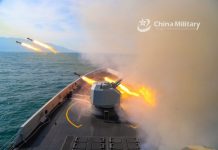The EJ200 jet engine that powers the Eurofighter Typhoon is one of the strongest aircraft powerplants in the world today. How does it fare against the engines that run the Typhoon’s contemporary fighter jets?
Japanese Version Of F-16 Fighter Aircraft Loses Its Cockpit Canopy Mid-Air While Chasing An Intruding Jet
F-35 Stealth Jets Plagued By Engine Issues; Will USAF Dump ‘Low Yield’ Pratt & Whitney Engines For GE’s XA100?
The Typhoon was a result of a collaboration between the UK, Germany, Spain, and Italy. It is a 4.5-generation, twin-engine, delta-wing, beyond-visual-range, close-air combat aircraft, capable of surface attack and ‘super cruise’.
Eurojet Calls It ‘Unrivalled’
Gerhard Bähr, CEO of EUROJET, said that EJ200 is “unrivalled” in terms of its handling and flexibility. “The feedback we receive from our customers constantly references the unprecedented reliability and high performance of the Eurofighter propulsion system,” he said.
Despite Rafale Boost, Why Indian Air Force Remains ‘Ill-Equipped’ To Battle Chinese PLAAF Over The LAC?
According to the company, the total fleet engine flying hours are already above 1.3 million and the leading engine in the fleet now has more than 2,500 flying hours.
The mean time between the removal is more than 1,200 engine flight hours, which is outstanding for fighter engines. The in-flight shut-down, based on a 12-month rolling report, is below 0.01 per 1,000 engine flight hours, it says.
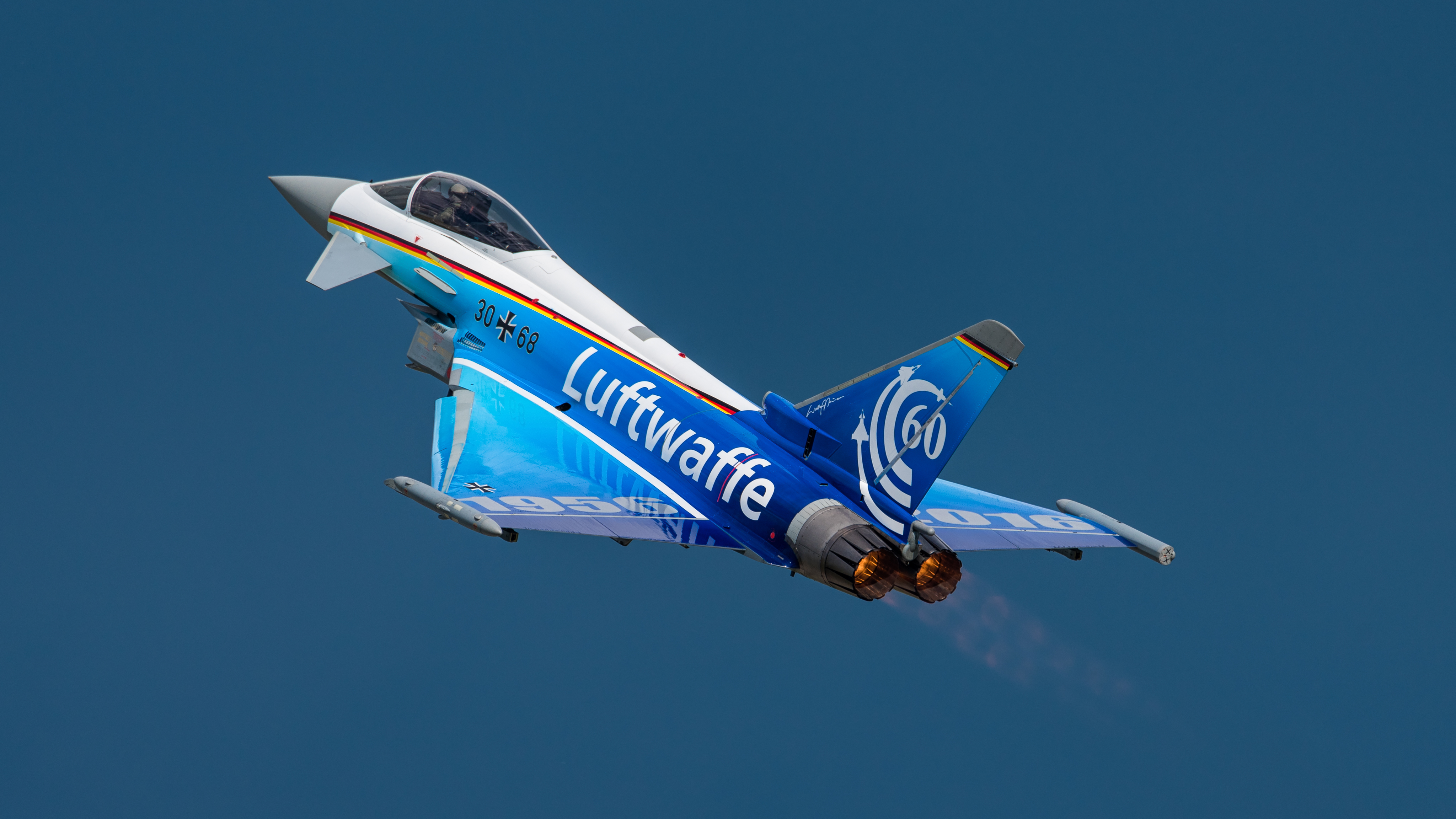
“These facts are the reasons why the EJ200 has earned such a tremendous reputation,” Gerhard said.
The engine is famous for its ease of maintenance, requiring only repairs on an ‘on condition’ basis compared to the more conventional fixed maintenance schedule used by traditional fighter engines. It also comes equipped with an in-built health monitoring system that gives intelligent focused guidance to the maintainers.
Gerhard said: “With the EJ200 maintainers can be selective because of its 15 fully interchangeable modules. The scope of repair works can be limited to primary and secondary causes. In fact, a number of the modules on the engine can be repaired without the need of a further test run.”
China’s Much-Hyped Stealth Drone ‘Sharp Sword’ Launches Swarming Decoys At Enemy Warships In A New Viral Video
The EJ200’s compression system integrates high-tech aerodynamics to provide great performance. At the same time, the engine is tolerant to Foreign Object Damage (FOD) too. The blade and the disk combination — blisk — helps make the EJ200 a very capable, robust engine. To this day, this engine is more cost-efficient than its competitors.
Eurojet says that if the fighter jet is upgraded, the engine would also require enhancements and that the company is for it.
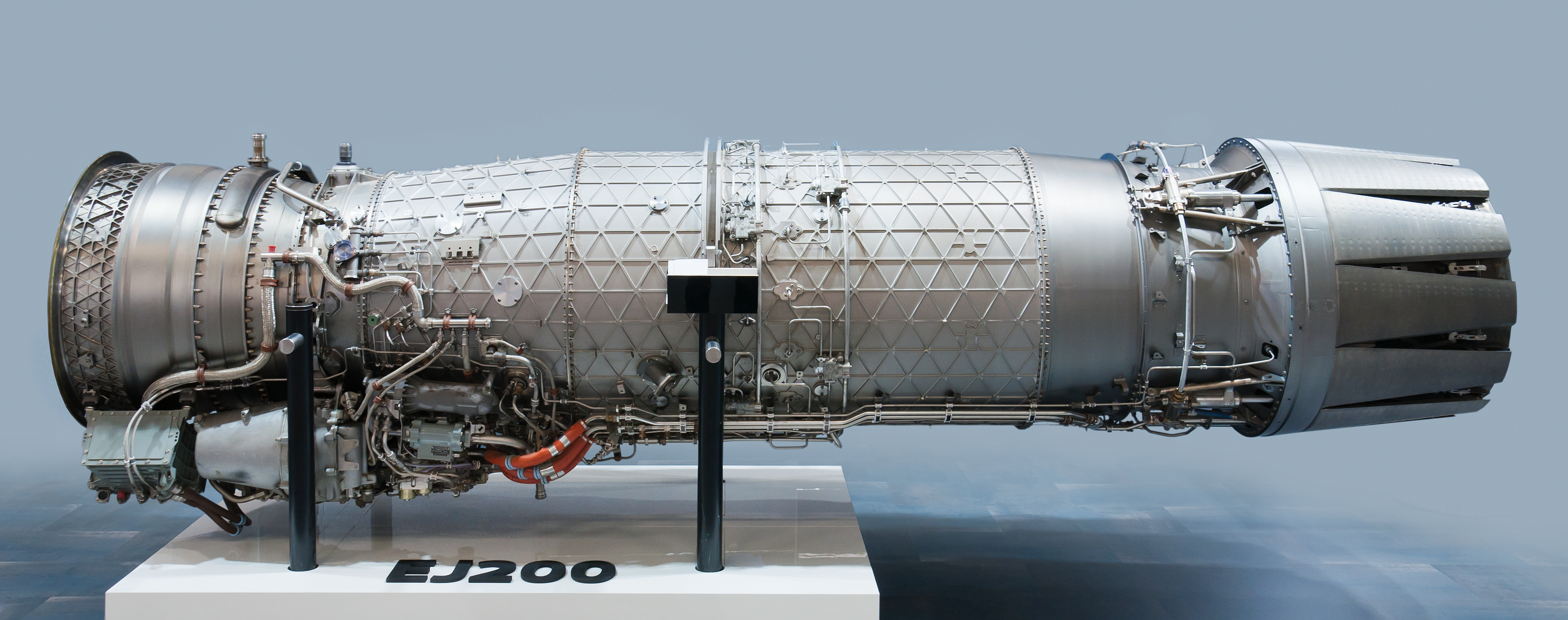
“We are closely integrated with Eurofighter,” says Gerhard. “For example, if the aircraft capability enhancements bring new systems and heavier weapons loads it would need more thrust in order to keep the same thrust-to-weight ratio and restore the aircraft’s performance and agility,” Gerhard said.
“The next-generation weapons systems, which are being developed in Europe, will undoubtedly require tomorrow’s technology on the engine side. But a capability enhancement of the EJ200 could potentially be a bridge to tomorrow’s technologies.
Such a long-term evolution of the engine would keep the Eurofighter propulsion system state of the art well into the next decades. This is key for the nations which are already planning to operate this weapon system beyond the mid of the century,” he added.
Pioneer In Indian Aviation – Can Tatas Again ‘Rule The Roost’ After Acquiring National Carrier – Air India?
The Russian AL-31F
The Saturn AL-31F aircraft engine, the one that powers Russia’s famed Sukhoi-35 jet, is a modular two-shaft turbofan engine. It consists of the parts such as a gas generator, an annular combustor, an afterburner, and a nozzle, an accessory gearbox, and a control system.
The compressor portion in the gas generator includes a 4-stage low-pressure module and a 9-stage high-pressure module.
The engine employs a two-stage (HP and LP) turbine that has adjustable radial clearance because of thermal expansion. It utilizes an annular combustor and a supersonic variable-area nozzle. The AL-31FP variant additionally incorporates a thrust vectoring nozzle, too.
Post-modernization, the engine was installed with a Full Authority Digital Engine Control (FADEC)-type digital control system. This allows for improved acceleration capability and efficiency. The engine’s modular design ensures ease of operation and the convenient replacement of damaged components in the field.
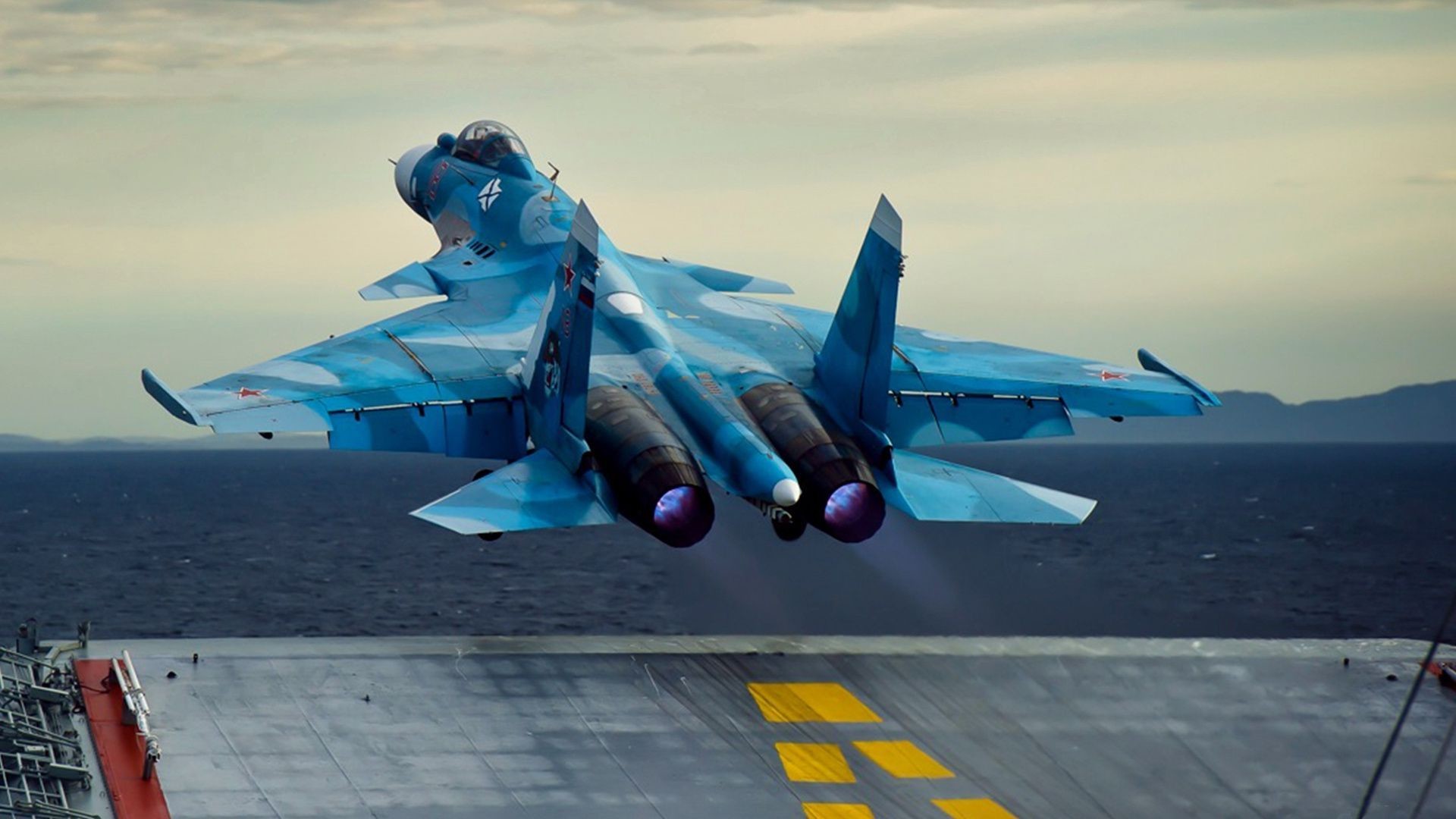
The engine can be employed over a wide range of flight altitudes and speeds. It is capable of operating under deep air intake surge conditions- even in spin flight. The engine also provides unique maneuverability of the aircraft.
The AL-31FN variant possesses a bottom-mounted accessory gearbox. This is employed to power single-engine fighters. Meanwhile, the AL-31FP version, which comes with thrust vector control, is installed on Su-30MKI-type aircraft.
The modernization of the AL-31F aimed at increasing the thrust-economic characteristics, reliability. Resource efficiency is increased by gradually introducing progressive design and design-technological solutions.
Rafale’s M88-2 Engine
Dassault’s multirole combat fighter Rafale is powered by two M88-2 engines. The M88 possesses uber-sophisticated technologies like single-piece bladed compressor disks (blisks), single-crystal high-pressure turbine blades, a non-polluting combustion chamber, powder metallurgy disks, ceramic coatings, as well as composite materials. Each of the M88 provides a thrust of 75kN.
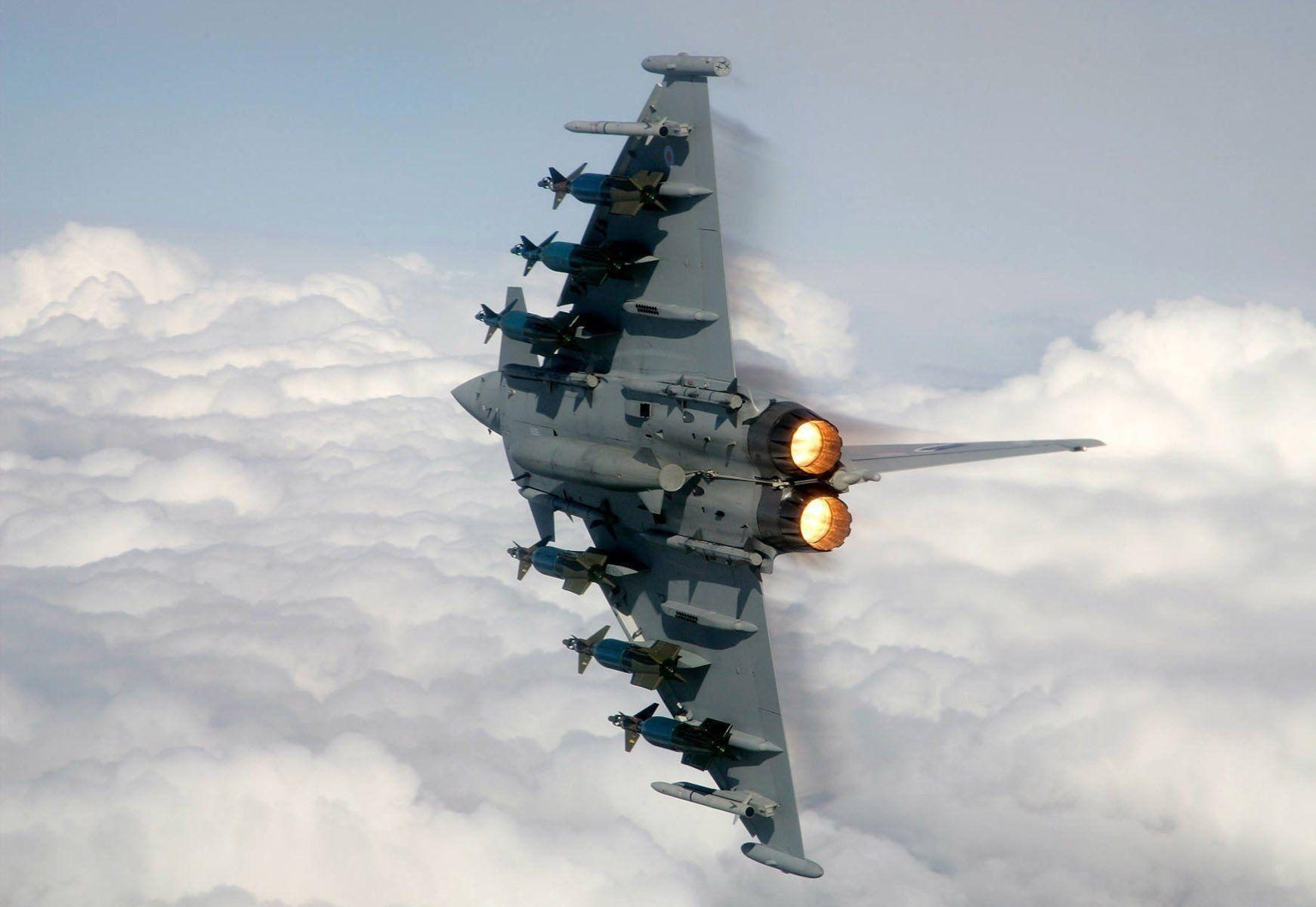
The M88 engine comprises a three-stage LP compressor with an inlet guide vane, an annular combustion chamber, and a single-stage cooled HP turbine. Along with these, this powerplant has a single-stage cooled LP turbine, radial A/B chamber, variable-section convergent flap-type nozzle, as well as FADEC.
P&W F-135 Engine
All three variants of the F-35 are powered by the Pratt and Whitney low-bypass augmented turbofan F-135 engine. This engine is a derivative of the F119 that was fitted in the F-22 Raptor. The main engine has a three-bearing swiveling exhaust nozzle. It is supplemented by two roll control ducts on the inboard section of the wing.
The engine is also extremely dependable. It demonstrates a step-change in readiness and reliability that is better than 4th generation fighter engines. The design is also quite damage-tolerant and fully integrated prognostic health monitoring.

The F-135 not only has more than 40,000 lbs. of thrust but is also quite low-observable thermal management. Pratt and Whitney claims that the engine has the most advanced integrated engine control system ever created.
Each engine is equipped with two BAE Systems FADEC systems. When it comes to the F-35B, the engine is integrated with a shaft-driven lift fan system for STOVL propulsion. The engine possesses a Rolls-Royce Defence developed counter-rotating lift fan. This can generate over 20,000lb of thrust.
This comparison shows that despite being one of the strongest jet engines in its class, the EJ200 has some strong competition with other players in the market. However, the high cost of the engine seems justified given its reliability and maneuverability.
- Nitin holds a double master’s degree in Journalism and Business Management (MBA) from The University of Glasgow, UK. He has over 15 years of global experience in Marketing & Communications, Journalism, and Digital Marketing and widely worked & traveled across Europe, the Americas and Asia. CONTACT: Nytten@gmail.com
- Follow EurAsian Times on Google News


